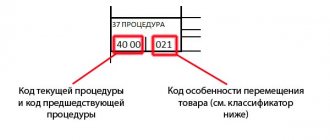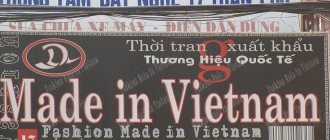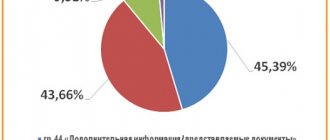The modern market is rich in a variety of goods and services. But in practice, many of them perform similar functions, and which one to choose is decided by the consumer, based on certain principles. To determine the customs value, as well as when carrying out government procurement, the law requires that goods be combined into groups according to their similarity: homogeneity or identity and take this into account when determining their value.
Let us analyze which goods can be classified as homogeneous, clarify their characteristics, and consider how similarity is reflected in the customs value of homogeneous goods.
What are the differences between identical and similar goods ?
Concepts of homogeneous, identical and differentiated goods
Homogeneity implies similarity in composition (or production from the same materials), as well as the ability to perform the same functions and replace each other. Many properties are taken into account, the main ones being:
- quality and period of use;
- brand and its popularity in the market;
- country of origin and method of sale;
- distinctive features and advantages;
- user category and others.
Identical and homogeneous are different concepts. For example, shower gels from the same manufacturer, the same brand and nomenclature, but with some differences in composition will be identical. And if the manufacturers are different, then they will be homogeneous, since the products are completely commercially interchangeable.
A differentiated product satisfies the same needs and has the same basic characteristics. It differs in appearance (packaging, labeling, style), some changes in composition and quality, conditions of sale, but is subject to classification into one product type. These are close, but not homogeneous products. Based on the subjective preferences of the consumer, as a result of which different brands of goods are considered by him as different goods.
Homogeneous category
Homogeneous GWS - having the following comparable characteristics:
- composition of similar materials;
- same quality;
- single country of origin;
- equal reputation of the manufacturer in the market;
- commercial interchangeability.
For example, two drugs that have the same active substance (INN), the same indications for use, release form, composition, the same country of origin, are interchangeable, but are produced by different manufacturers, respectively, having different trade names are recognized as homogeneous.
Regulatory regulation
At the legislative level, the concept of homogeneity of goods appeared relatively recently, namely at the time the 1st part of the Tax Code came into force, in January 1999. Initially it was used only in relation to goods, but since January 2012 it has also been applied to works and services (7th paragraph of Article 38 of the Tax Code of the Russian Federation).
Recommendations for establishing homogeneity are contained in the 198th Order of Rospatent dated December 31, 2009. They must be taken into account, first of all, when submitting an application for the possibility of using distinctive signs in activities (for a product or service).
Consequences of errors
Although it is often the supplier who prepares and presents the description of the procurement object to the customer, and not because of the corruption component, but because the customer cannot have information about the technical characteristics of all existing models and types of products, the customer must take into account that non-compliance with the rules for determining the identity and homogeneity of industrial and technical materials may serve as recognition of the purchase as invalid (decision of the Novgorod OFAS dated June 19, 2014 in case No. 3426/0, decision of the Dagestan OFAS dated May 28, 2014 No. 249A-2014, decision of the Sverdlovsk Regional Court dated March 14, 2017 in case No. 72-272/2017).
Signs of homogeneity and examples of goods (works, services)
Classification of goods as homogeneous occurs based on the results of a carefully conducted analysis. There are main and additional (auxiliary) signs . So, the main ones include:
- type (genus) of products;
- purpose of application;
- the material used in its production.
When identifying homogeneity, it is necessary to take into account their purpose, interchangeability during consumption, and the ability to perform identical functions.
For example, if a trademark has been issued for fermented baked milk, milk and kefir, then yogurt is a homogeneous product. But butter, sausage and cookies will not be homogeneous.
Franchising
An identical product must be produced by the same manufacturer. Let's look at the example of franchising. There is a company that makes high-quality and delicious ice cream. But it cooperates only with wholesale intermediaries, without selling products directly to the end consumer. One entrepreneur, acting on behalf of , installed several refrigerators with ice cream in his city and set the price for it at 50 rubles per hundred grams.
Another entrepreneur came and also decided to sell ice cream in the same city from the same company. In this case, these entrepreneurs will trade identical goods. The second businessman will set his own price, focusing on the one that the first one has already set.
Signs: product and service
A manufacturer, in order to individualize the products he produces, can register a trademark in the State Register, that is, his exclusive right to use a unique designation of a product (in everyday life you can find terms of similar meaning: “brand” and “trademark”). The concept of “service mark” is applied to the work performed or the provision of services. They can be:
- verbal or graphic (unique image);
- voluminous or have an original shape (of the product itself or its packaging);
- combine several elements (combined);
- a certain color or sound;
- tactile and others.
"Black Swan"
Let's consider an example of a company entering the market with an identical product. Here we will talk about one that has been producing cakes for many years in a row. It has a good reputation, delicious products, and the most popular is the Black Swan cake with chocolate and white icing.
The company, in order to expand and form a product range, decided to change the Black Swan chocolate cake and add caramel glaze to it, calling the product “Sweet Passion”. In this case, the product will be identical, and the price will be formed based on the first cake.
Legal protection of similar goods
The Civil Code of the Russian Federation (Article 1483, paragraphs 6 and 3) contains a ban on a trademark that, according to certain criteria, is similar to the brand of another organization, to the so-called “degree of confusion.” The restriction applies to homogeneous goods.
A trademark is registered with Rospatent after a thorough check for its uniqueness in a similar group of products, works or services. The procedure is necessary to avoid misleading the end consumers of the product regarding its manufacturer.
Also, according to paragraph 3 of Article 1508 of the Civil Code of the Russian Federation, legal protection for the use of a trademark also applies to goods that are not homogeneous in cases where the consumer has associations with its legal owner due to mixing or copying of the marked image.
In Russia, the International Classification of Goods (from the first to the 34th classes) and services (from the 35th to the 45th) of June 15, 1957 is used, but according to many courts, its provisions cannot be used in determining homogeneity .
How to protect yourself from plagiarism
To protect yourself from dishonest entrepreneurs who want to use your technical specifications, you can rely on clause 6 of Art . . This paragraph states that in relation to homogeneous goods, the use of trademarks that are in one way or another similar to trademarks of other organizations is prohibited.
According to clause 3 of Article 1483 of the Civil Code of the Russian Federation, individual entrepreneur or legal entity. a person does not have the right to use someone else’s trademark or designations similar to it. It also states that this rule also applies to homogeneous products if this could lead to their mixing.
This means that at the legislative level the possibility of individualizing such goods from different companies with confusingly identical technical specifications is not allowed.
Their similarity is determined during the examination process, during the procedure for registering trademarks with Rospatent. This is carried out only in relation to exactly this type of product in order to avoid the entry of similar technical specifications into the market.
If the identity of the trademark of homogeneous goods is proven, then the organization that second submitted documents for trademark registration will be refused.
Responsibility
For the use of someone else's registered mark, administrative liability is provided, according to Article 14.10 of the Code of Administrative Offenses of the Russian Federation, with confiscation of items intended for sale and misleading consumers about the true manufacturer, as well as tools for the production and application of illegal markings to goods.
There is also a civil legal form of liability under Article 1515 of the Civil Code of the Russian Federation for counterfeit goods, which involves the withdrawal from sale and destruction by the forces and means of the offender of packaging, labels, goods with an illegal distinctive image, as well as compensation payments to the copyright holder of this brand.
Thus, to recognize goods (work, services) as homogeneous, the end consumer’s opinion regarding its manufacturer (or service provider) is taken into account. Legal protection, through the use of special markings, is aimed at avoiding unfair methods of competition, as a result of which the legal owner of a well-known mark may suffer not only financial loss, but also damage to its prestige. Failure to comply with legal requirements is subject to liability under administrative and criminal codes.
How to determine identity
In accordance with the methodological recommendations of the Ministry of Economic Development of the Russian Federation, goods that have the same basic characteristics characteristic of them are recognized as identical:
- functional;
- technical;
- quality;
- operational characteristics.
When determining the identity of goods, consider:
- country of origin;
- manufacturer.
If the goods differ slightly in appearance, these differences are not taken into account.
As for works and services, the main signs of identity for them are:
- use of the same methods, technologies, approaches;
- comparable qualifications of contractors.
Decision of the EEC Board of October 30, 2012 No. 202
The concept of “produced” (“produced”) in relation to goods also has the meaning “extracted”, “grown”, “manufactured (including by installation, assembly or disassembly of goods)”. Identical or similar goods produced by a person other than the manufacturer of the evaluated (imported) goods are taken into account only in cases where correspondingly identical or similar goods from the same manufacturer are not identified or the available information is not considered acceptable for use.
Example 1. Two cars are imported into the customs territory of the Customs Union, identical in all respects (same brand, same configuration, etc.), but differing in color, which is considered a discrepancy in appearance.
If the specified discrepancy in color did not affect the price of the product, such a discrepancy can be classified as insignificant and the cars are recognized as identical.
However
When the Federal Service for Intellectual Property (hereinafter referred to as Rospatent) considers applications for registration of trademarks, objections to the provision of legal protection to trademarks, as well as when courts consider applications to challenge the relevant decisions of Rospatent, cases of infringement of rights to trademarks, early termination of legal trademark protection (when assessing the interest of the plaintiff and the fact of use of a well-known trademark by the defendant) it is required to establish the homogeneity of goods and/or services.
The provisions of Part 4 of the Civil Code of the Russian Federation (hereinafter referred to as the Civil Code of the Russian Federation) do not contain a definition of homogeneity and the rules for its establishment.
As noted in paragraph 42 of the Review of judicial practice in cases related to the resolution of disputes on the protection of intellectual rights, approved by the Presidium of the Supreme Court of the Russian Federation on September 23, 2015, when establishing the homogeneity of goods, the following circumstances must be taken into account: the type (type) of goods, their consumer properties and functional purpose (scope and purpose of use), type of material from which they are made, complementarity or interchangeability of goods, conditions for their sale (including general place of sale, sale through a retail or wholesale network), range of consumers, traditional or preferential way of use goods.
Homogeneity is recognized in fact if goods (services), due to their nature or purpose, can be attributed by consumers to the same source of origin.
Homogeneous goods are goods (services) that are not identical in all respects, but have similar characteristics and consist of similar components made from the same materials, which allows them to perform the same functions.
A similar approach is reflected in paragraph 45 of the Rules for the preparation, submission and consideration of documents that are the basis for performing legally significant actions for the state registration of trademarks, service marks, collective marks, approved by order of the Ministry of Economic Development of the Russian Federation dated July 20, 2015 No. 482 (hereinafter referred to as the Rules registration of trademarks), which notes that establishing the homogeneity of goods involves determining the fundamental possibility of the consumer having the idea that these goods belong to the same manufacturer.
The specified paragraph of the Trademark Registration Rules lists the circumstances that are taken into account when establishing the homogeneity of goods: the type, type of goods, their consumer properties, functional purpose, type of material from which they are made, complementarity or interchangeability of goods, conditions and channels for their sale ( general place of sale, sale through a retail or wholesale network), circle of consumers and other characteristics.
The conclusion about the homogeneity of goods is made based on the results of an analysis of the listed characteristics in their totality if the goods or services, due to their nature or purpose, can be attributed by consumers to the same source of origin (manufacturer).
Recommendations for establishing homogeneity are contained in the Guidelines for the implementation of administrative procedures and actions within the framework of the provision of public services for state registration of a trademark, service mark, collective mark and the issuance of certificates for a trademark, service mark, collective mark, their duplicates, approved by order of the Federal Service for intellectual property dated July 24, 2018 No. 128 (hereinafter referred to as the Guidelines for Trademark Registration).
At the same time, many issues that arise in practice are not resolved in these acts.
Moreover, an analysis of international experience, in particular the practice of the European Court and the European Union Intellectual Property Office, has shown that the approaches currently used in Russia differ from the approaches used in other countries on some important issues, despite the fact that the legislation is formulated similarly way.
In this regard, it is proposed to discuss a number of controversial issues that arise when establishing the homogeneity of goods and/or services
Section 1
1. When establishing the homogeneity of goods and services, which issues are a matter of law, and which are a matter of fact?
The distinction between issues of law and fact when assessing homogeneity allows us to determine, among other things, whether Rospatent and the courts should establish the homogeneity of goods and services, regardless of whether the corresponding argument has been stated and the corresponding evidence has been presented, whether the parties can recognize the fact of homogeneity in accordance with Article 70 of the Arbitration Code of the Procedural Code of the Russian Federation (hereinafter referred to as the Arbitration Procedure Code of the Russian Federation), whether the homogeneity of goods and services established by a judicial act of the arbitration court in a previously considered case involving the same persons has a prejudicial nature (part 2 of Article 69 of the Arbitration Procedure Code of the Russian Federation).
This question is also of no small importance for determining within what framework, taking into account Article 286 of the Arbitration Procedure Code of the Russian Federation, the cassation court can check whether homogeneity was correctly established by the lower court.
Thus, in one of the cases of violation of the exclusive right to a trademark, considered by the Supreme Court of the Russian Federation in cassation, the acts of the lower courts were canceled due to the fact that they did not take into account the provisions of regulations on establishing the similarity of designations, and conclusions about such similarity were made without conducting a comprehensive analysis (ruling of the Supreme Court of the Russian Federation dated 02.02.2017 No. 309-ES16-15153 in case No. A60 44547/2015). It seems that a similar position applies to the assessment of homogeneity. If judicial acts do not evaluate the criteria of homogeneity and do not justify why one or another criterion was not taken into account, or do not indicate on the basis of which the court came to the conclusion about homogeneity/heterogeneity, then this may indicate a violation by the court of substantive law and serve as a basis for canceling such a judicial act.
The European approach to establishing homogeneity is of interest. Thus, in European practice, the degree of homogeneity of goods and services is a matter of law, which must be investigated by the relevant body by virtue of its powers (ex officio), even if the parties did not declare this (decision of the Court of Justice of the European Union of 01/16/2017 in case T-53 /05, paragraphs 3.4.1 and 3.4.2 of Chapter 1, paragraph 1.6 of Chapter 2, Section 2, Part C of the Methodological Recommendations for the Examination of Trademarks of the European Union - see appendix). This verification, however, is limited to open information, that is, only those circumstances that are generally known or that can be obtained using publicly available sources. It is believed that the determination of the criteria of homogeneity and their relevance in a particular case is a matter of law, and the fulfillment of the criteria in a particular case is a matter of fact. Recognition by the parties of the homogeneity of goods and services does not relieve the competent authority from the obligation to evaluate this legal concept (see more about this in the appendix).
2. Does the conclusion about the homogeneity of goods and/or services depend on factual and other circumstances, in particular on the similarity of designations?
If the conclusion about the homogeneity of goods and/or services does not depend on factual circumstances, including what arguments were stated by the parties and what evidence was presented in support of them, the homogeneity of certain commodity items and/or services in the classes of the International Classification of Goods and Services for registration of marks (hereinafter referred to as ICGS) is constant (constant).
If homogeneity depends on factual circumstances, then it must be established in relation to each case, and in different cases, taking into account specific circumstances, different conclusions about the homogeneity of the same product items and/or services can be made.
The homogeneity of goods and/or services is one of the factors that influences the conclusion about the danger of confusion when the trademarks of several persons “collide”. As has been repeatedly noted in judicial decisions of the Intellectual Property Rights Court, the likelihood of confusion depends on the degree of similarity of the designations and the degree of homogeneity of the goods for ordinary consumers of the relevant goods, as well as on other factors, including distinctiveness, fame of the older trademark, the range of consumers and their level attentiveness, the presence of a series of trademarks, the presence of evidence of actual confusion (rulings of the Presidium of the Intellectual Rights Court dated June 29, 2018 in case No. SIP-710/2017, dated July 16, 2018 in case No. SIP-502/2017, dated July 23, 2018 in case No. SIP-534/2017, dated 07/30/2018 in case No. SIP-584/2017, dated 09/28/2018 in case No. SIP-594/2017, dated 07/09/2018 in case No. SIP 605/2017, dated 07/30/2018 case No. SIP-160/2017, dated 08/03/2018 in case No. SIP-163/2017 and others).
Given this, it appears that these factors do not influence each other, but rather the overall conclusion about the danger of confusion. Thus, a similar conclusion about the absence of a relationship between the popularity of a senior trademark and the similarity of designations was made in the decision of the Presidium of the Intellectual Rights Court dated October 19, 2018 in case No. SIP-137/2018.
Thus, the conclusion about the homogeneity of specific ICGS commodity items to each other should not depend on factual circumstances. At the same time, a conclusion about which position of the ICGS a specific product falls under (for example, in cases of violation of the exclusive right to a trademark or in cases of early termination of legal protection of a trademark) can only be made on the basis of factual circumstances, including number, taking into account the purpose of the product, material of manufacture, etc.
In paragraph 45 of the Trademark Registration Rules, the similarity of the compared designations is not mentioned among the circumstances that are taken into account when establishing homogeneity
At the same time, paragraph 7.2.3 of the Trademark Registration Guidelines states that the degree of homogeneity of goods and/or services is closely related to the degree of similarity of the designations intended for their marking. In a situation where the declared designation and the opposing trademark (designation) are identical or slightly different from each other, that is, almost identical, goods and services associated with these goods can be recognized as homogeneous.
At the same time, European practice demonstrates a different approach, according to which the similarity of the compared designations does not affect the comparison of the corresponding goods and services (clause 1.6 of Chapter 2, Section 2, Part C of the Guidelines for the Examination of Trademarks of the European Union). The degree of similarity of the designations only affects the general conclusion about the presence of a danger of confusion between the compared designations/trademarks.
Thus, the following question arises: are the homogeneity of goods and the similarity of designations independent circumstances, each of which to a certain extent affects only the danger of confusion, or do they also affect each other?
3. Is it necessary to establish the degree of homogeneity of goods and/or services, and if so, in what cases?
In the relevant provisions of Part Four of the Civil Code of the Russian Federation, when it comes to the homogeneity of goods, the degree of homogeneity is not mentioned.
From the provisions of paragraph 45 of the Trademark Registration Rules, it follows that as a result of assessing the criteria that must be taken into account when establishing homogeneity, a conclusion is drawn about homogeneity. These Rules do not contain provisions on the need to establish the degree of homogeneity.
From this we can conclude that in order to apply the relevant provisions of Part Four of the Civil Code of the Russian Federation (clause 3 of Article 1484, clause 6 of Article 1483, Article 1486), it is not necessary to establish the degree of homogeneity.
At the same time, some provisions of the Guidelines for Trademark Registration deal with establishing the degree of homogeneity (paragraph thirteen of paragraph 7, penultimate paragraph of paragraph 7.1.1, paragraph 7.2.3).
According to European practice, as a result of comparing goods and/or services, one of the following conclusions is drawn: 1) the goods are identical; 2) products are similar to a certain extent (high, medium, low); 3) the goods are not similar.
In this case, the degree of similarity of goods and/or services depends on how many factors indicate similarity and how important they are/what significance they have (clause 3.3.4 of Chapter 2, Section 2, Part C of the Methodological Guidelines for the Examination of Trademarks of the European Union - see Appendix ). The higher the degree of similarity, the higher the risk of confusion.
Taking into account the above, it seems advisable in cases where it is necessary to establish the danger of confusion of designations, to determine the degree of homogeneity of goods and/or services (for example, this approach was used in cases No. SIP-163/2017, SIP-450/2017, SIP-718/2016, SIP 717/2016, SIP-626/2016, SIP-594/2017, SIP-343/2017).
At the same time, in cases of early termination of legal protection of a trademark, determining the degree of homogeneity of goods seems unnecessary, since homogeneity in such cases is established only to assess the plaintiff’s interest in challenging the trademark and such interest can be at any degree of homogeneity of the goods (services) that are implemented by him, as well as to establish the fact of use of a well-known trademark, and it seems that it can be recognized at any degree of homogeneity of the goods (services) for which the trademark is registered and the goods that are actually put into circulation.
4. In what cases can a finished product and its components/spare parts, raw materials be considered homogeneous?
As has been repeatedly noted in judicial acts of the Intellectual Property Rights Court, the mere fact that one product may be part of another product or be one of the ingredients does not indicate the homogeneity of the goods. The range of consumers of raw materials and finished products can vary greatly (rulings of the Presidium of the Intellectual Rights Court dated April 7, 2016 in case No. SIP-454/2015 dated September 20, 2018 in case No. SIP-806/2017).
At the same time, this position does not exclude the recognition of the finished product and its components/raw materials as homogeneous.
A similar approach was expressed in one of the cases by the Court of Justice of the European Union, according to which the fact that certain goods consist of several parts does not automatically mean that the finished product and its component parts are homogeneous (decision of the Court of Justice of the European Union of October 27, 2005 in case T-336 /03). However, in some cases the homogeneity of such goods can be recognized. To do this, it is necessary to establish the presence of at least several basic criteria of similarity, such as the manufacturer, the range of consumers and/or the complementarity of goods (Appendices 1 and 2 of Chapter 2, Section 2, Part C of the Methodological Recommendations for the Examination of Trademarks of the European Union - see Appendix).
In each individual case, various factors must be taken into account.
A similar approach is used when establishing the homogeneity of raw materials and the finished product (Appendices 1 and 2 of Chapter 2, Section 2, Part C of the Guidelines for the Examination of Trademarks of the European Union - see Appendix). In most cases, the mere fact that a product is used for the production of another product is not enough to confirm homogeneity, since their type, the purpose of their use, the relevant circle of consumers and distribution channels can be very different (decision of the Court of Justice of the European Union of 13.04.2011 in the case of T 98/09).
Thus, in some cases, the finished product and components/spare parts, finished product and raw materials may be considered homogeneous.
It is proposed to discuss in what cases this is possible, on what factors the conclusion depends, in particular, whether the following goods can be considered homogeneous.
| Comparable products and/or services | ||
| 1 | “beer wort” (32nd class ICTU) | “beer” (32nd class ICTU) |
| 2 | “meat, poultry and game” (29th class ICGS) | “dumplings, ravioli” (30th class ICTU) |
| 3 | “drive belts for motors and engines; cylinders for motors and engines" (11th class ICTU) | “boat engines” (11th class ICTU) |
5. Is it possible to establish homogeneity only on the basis of one of the criteria of homogeneity, in particular, can food and non-food products be recognized as homogeneous only on the basis of the fact that they are sold in a supermarket on adjacent shelves?
6. In what cases is it possible to compare not each product item, but a group of products?
The current legislation does not contain provisions on the procedure for comparing goods (services) when assessing homogeneity. In this regard, the question arises as to whether it is necessary to compare each product item for each product item or whether it is possible to compare groups of goods.
In European practice, as a general rule, a conclusion about homogeneity is made in relation to each product (service); as an exception, a conclusion about homogeneity is allowed in relation to a group of goods when the goods have similar features/characteristics (clause 1.7 of Chapter 2, Section 2, Part C of the Methodological Recommendations on the examination of trademarks of the European Union - see appendix).
Taking into account the above, it is proposed to discuss how comparisons of goods (services) should be carried out, and in what cases it is possible to compare groups of goods.
Section 2
1. Indirect establishment of homogeneity through the homogeneity of other goods and/or services is unacceptable.
Thus, in one of the cases on the early termination of legal protection of a trademark registered in relation to the product “alcoholic beverages (except for beer)” of the 33rd class of the ICGS, a person, in confirmation of his interest, referred to the fact that he provided services for the sale of beer, which are homogeneous the product “beer” of the 32nd class of the ICGS, which, in turn, is homogeneous to the goods “alcoholic drinks (except beer)” of the 33rd class of the ICGS.
The courts did not agree with this approach, pointing out that in order to recognize a person as an interested party, it is necessary that the goods for which early termination of the legal protection of a trademark is requested be directly similar to the services provided by the plaintiff, and not to goods recognized, in turn, as similar to those actually provided plaintiff services (resolution of the Presidium of the Court for Intellectual Rights dated 01/22/2018 in case No. SIP-280/2017, a similar legal position is reflected in the decisions of the Presidium of the Court for Intellectual Rights dated 02/06/2017 in case No. SIP-418/2016 and dated 08/31/2017 in case No. SIP-633/2016).
2. The homogeneity of the service of the 42nd class of the ICGS “sale of goods” and the corresponding goods is possible if the sales service is specified by the range of goods sold or by field of activity.
This possibility, in particular, is drawn to paragraph 4 of the information letter of the Federal Service for Intellectual Property dated December 23, 2011 No. 2 “On the wording of terms identifying services related to trading activities when including them in the list of services of class 35 of the ICGS” (resolutions Presidium of the Intellectual Rights Court dated 04/05/2018 in case No. SIP-399/2017, dated 04/12/2018 in case No. SIP-397/2017, dated 04/12/2018 in case No. SIP-344/2017, dated 04/23/2018 in case No. SIP-343/2017).
Application. Excerpts from the Guidelines for the Examination of Trademarks of the European Union
Application. Table on homogeneity for discussion at the NCC
1 Prior to this, the Rules for drawing up, filing and considering an application for registration of a trademark and service mark, approved by order of the Russian Agency for Patents and Trademarks dated March 5, 2003 No. 32, were in effect.
2 Previously, there were Methodological Recommendations for determining the homogeneity of goods and services during the examination of applications for state registration of trademarks and service marks, approved by Order of the Federal Service for Intellectual Property, Patents and Trademarks dated December 31, 2009 No. 198 (hereinafter referred to as Methodological Recommendations No. 198) .
3 Issues for discussion at the meeting of the Scientific Advisory Council.
4 Previously, similar provisions were enshrined in paragraph 3.6 of Methodological Recommendations No. 198.
5 These issues are not brought up for discussion at a meeting of the Scientific Advisory Council, but a written position on them can be presented.
44-FZ for dummies. Part five.
These conditions are considered comparable if the differences between these conditions do not affect the final result. Simplifying the above, you need to compare prices for goods in identical packaging with shipment to the same place, and with the same time frame. The customer also has the right to use coefficients and indices to recalculate the prices of goods . The justification for the use of coefficients and indices may be differences in the characteristics of goods or financial and commercial differences in the terms of delivery of goods. Simply put, the use of coefficients and indices is necessary when comparing homogeneous goods, and/or non-identical packaging, and/or shipment to a different location , and/or with different time frames. Open information about prices for identical or homogeneous goods can be obtained by requesting from suppliers or independently. Open information about prices for goods are public offers provided by potential suppliers.
Consulting services to support state, municipal and commercial procurement, accreditation on electronic platforms, obtaining an electronic signature, support of competitions, auctions and quotations (turnkey government procurement 44-FZ, 223-FZ), Overhaul of apartment buildings according to 615-PP of the Russian Federation, PA " Procurement register" TriTon LLC, Anapa
Determination of the identity and homogeneity of goods, works, services to meet state and municipal needs is carried out in accordance with the provisions of Parts 13 - 15 and 17 of this article.
When using the market price comparison method, the customer sets the initial (maximum) contract price based on information on market prices of identical goods, works and services planned for procurement, and in the absence of identical goods, works and services - homogeneous goods, works and services. The customer will decide on the identity or homogeneity of goods, works and services independently, guided by methodological recommendations that will have to be approved by the Russian Ministry of Economic Development. Law No. 44-FZ defines only a general approach to which goods, works and services are recognized as identical and which are homogeneous (Part.








